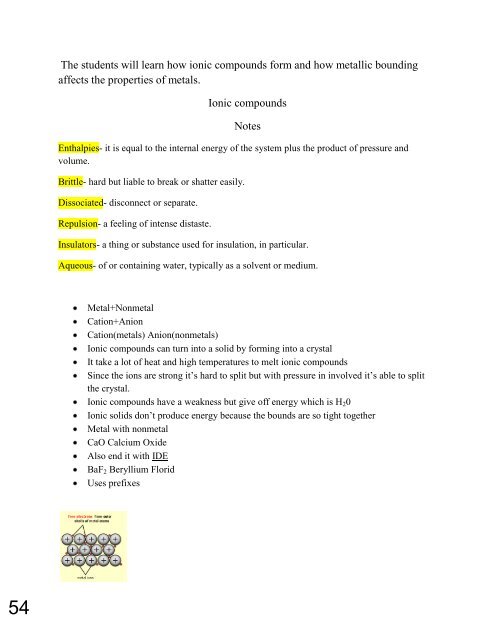You also want an ePaper? Increase the reach of your titles
YUMPU automatically turns print PDFs into web optimized ePapers that Google loves.
The students will learn how ionic compounds form and how metallic bounding<br />
affects the properties of metals.<br />
Ionic compounds<br />
Notes<br />
Enthalpies- it is equal to the internal energy of the system plus the product of pressure and<br />
volume.<br />
Brittle- hard but liable to break or shatter easily.<br />
Dissociated- disconnect or separate.<br />
Repulsion- a feeling of intense distaste.<br />
Insulators- a thing or substance used for insulation, in particular.<br />
Aqueous- of or containing water, typically as a solvent or medium.<br />
Metal+Nonmetal<br />
Cation+Anion<br />
Cation(metals) Anion(nonmetals)<br />
Ionic compounds can turn into a solid by forming into a crystal<br />
It take a lot of heat and high temperatures to melt ionic compounds<br />
Since the ions are strong it’s hard to split but with pressure in involved it’s able to split<br />
the crystal.<br />
Ionic compounds have a weakness but give off energy which is H 2 0<br />
Ionic solids don’t produce energy because the bounds are so tight together<br />
Metal with nonmetal<br />
CaO Calcium Oxide<br />
Also end it with IDE<br />
BaF 2 Beryllium Florid<br />
Uses prefixes


